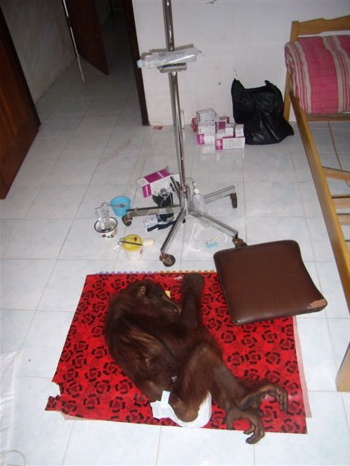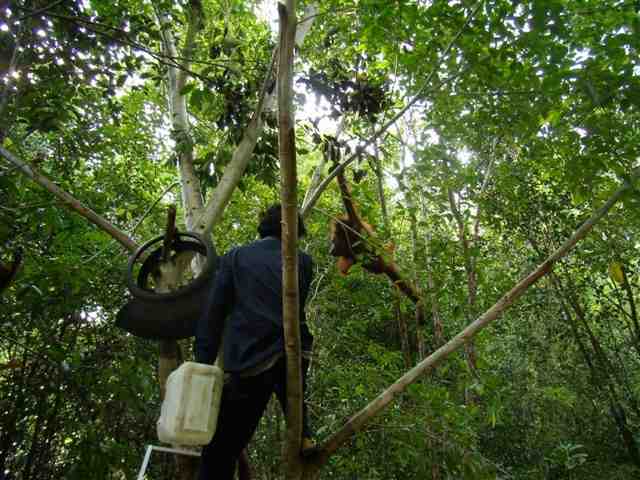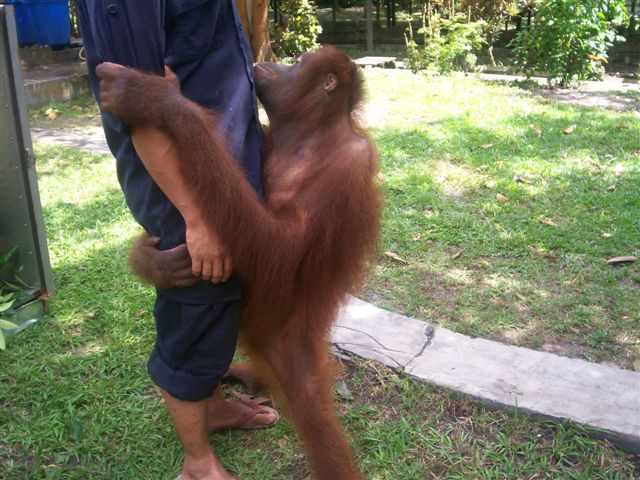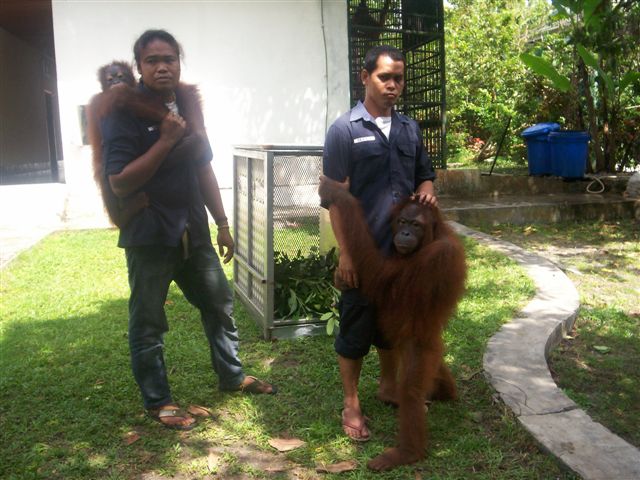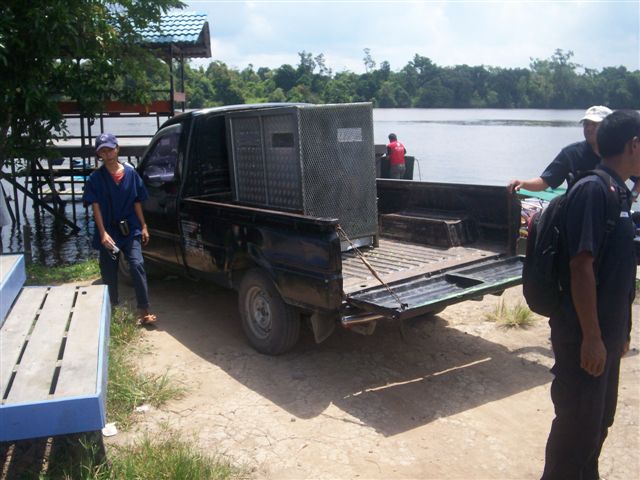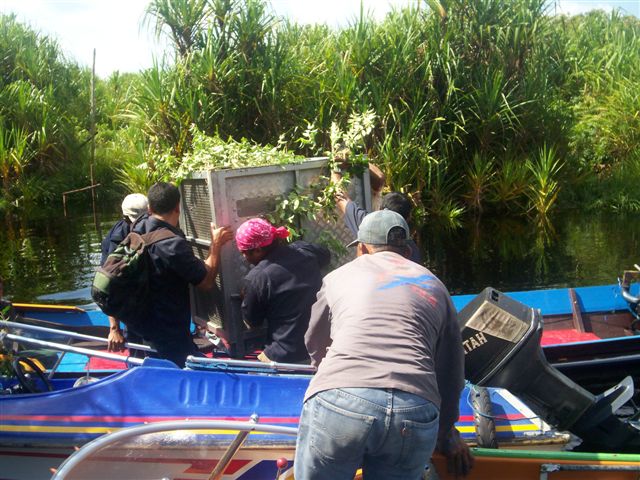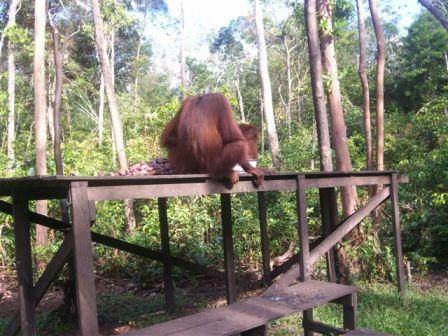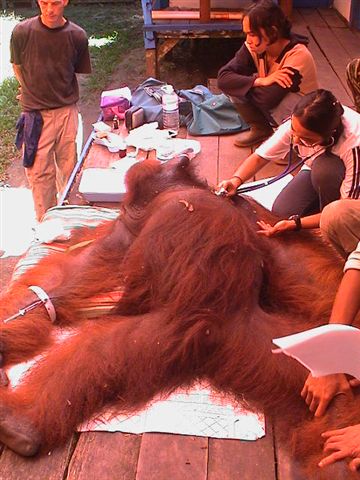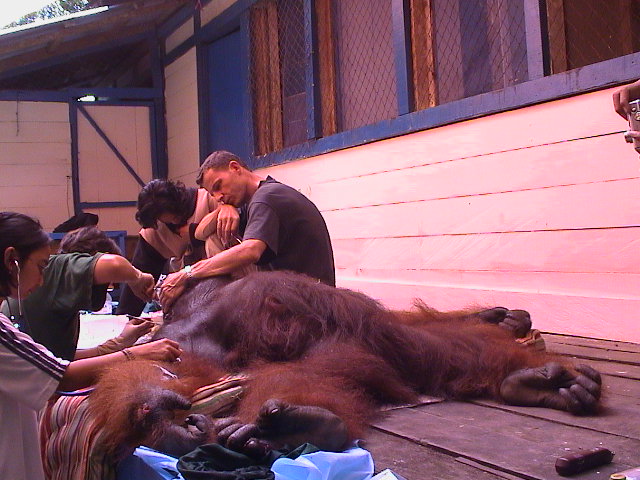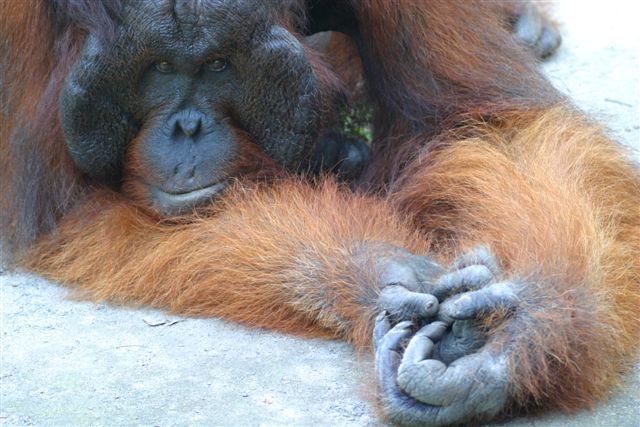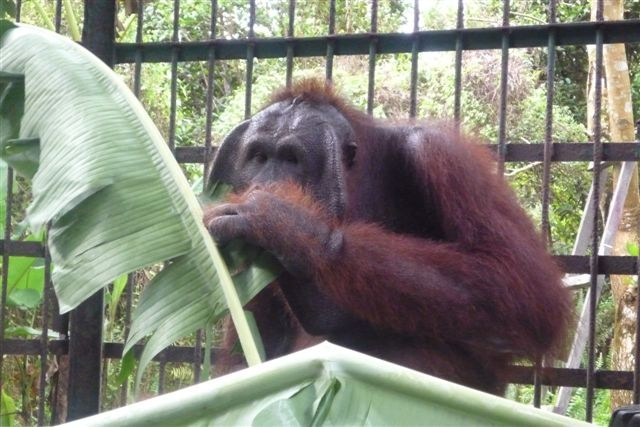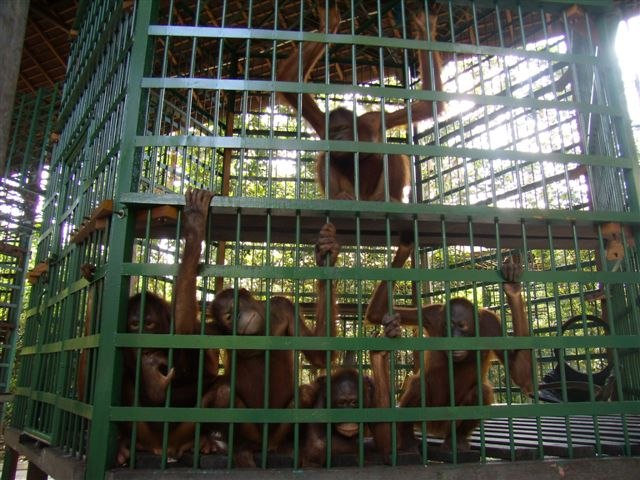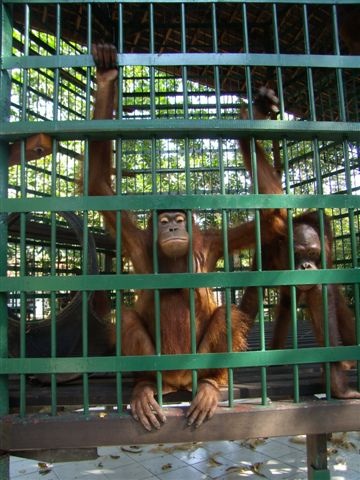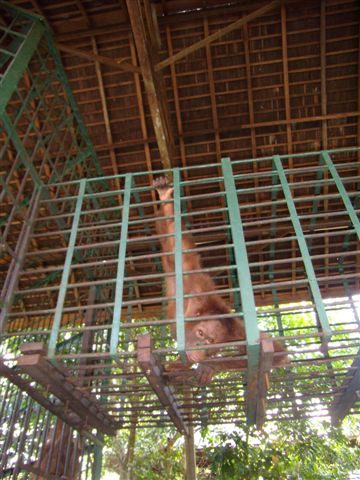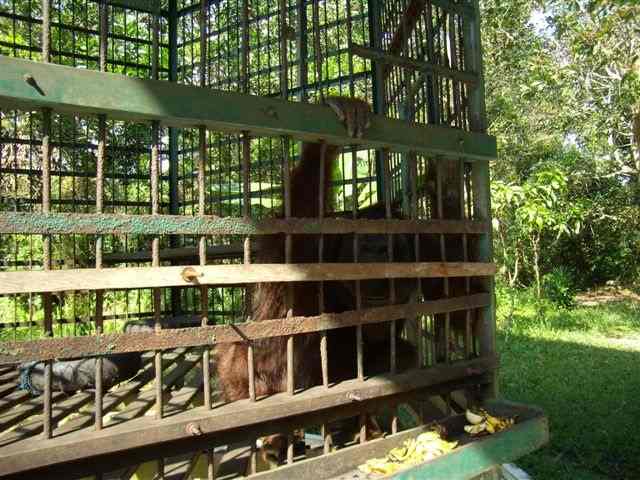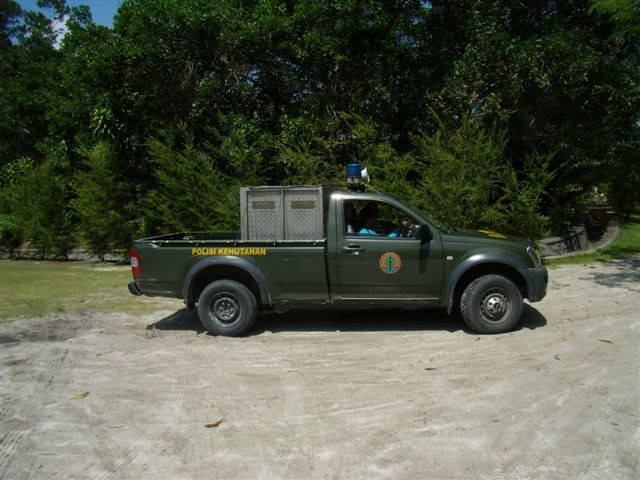Wildlife Direct suggested I give you more information about my life working in conservation with orangutans, what it's like working as a conservationist, in the field, in Borneo compared with Africa. I will try to give you a better picture of what it is like working in Borneo, a "typical day" if you can call it that.
Despite the impression you may have gathered from this blog, like many people in the world, I work in an office in the town of Pangkalan Bun and it feels like 90% of my time is devoted to emails and Excel spreadsheets. The Orangutan Foundation has a conscious policy of capacity building and investing in Indonesians, so I am the only expatriate employee. Indeed, I am the only westerner in town! I am responsible for project supervision and all English language communication, particularly reporting to donors. I have to make regular reports from the field to the overseas offices, disseminate information from those offices to the relevant people in Indonesia, and help with proposal writing and forward planning.
Naturally part of my job involves fundraising. I think like most field based people I get so convinced by the worth of the cause I struggle a bit to complete grant applications, especially those using buzz words, for example “Tell us about the multiplier effects of your planned project” (huh, we’re trying to multiply orangutans aren’t we?!) Crucially we have recently received large grants towards habitat protection work. For instance, the United Nations Environment Program with European Union funding supports our work in the Belantikan Hulu; this region contains the largest population of wild orangutans outside of a protected area. However, all of our orangutan rehabilitation work is funded from private donations and last year that cost over US$100,000. As the UK office has grown tired of telling me “Stephen, buying lottery tickets is not a sustainable fundraising strategy!”
The Orangutan Foundation office has a friendly relaxed atmosphere and is a lovely place to work from. There is a garden with a fish pond and mango, rambutan and banana trees, producing the most delicious fruit. The whole operations of the Foundation are co-ordinated from the office, we communicate by radio to all our field posts and my colleagues do a truly fantastic job. In the office there is Ully, the Office Manager; Astri, the Liaison Officer, who also helps me with this blog; Jak, the Patrol Manager; Teguh, the Guard Post Supervisor; Devis from Pondok Ambung and finally the Belantikan Conservation Programme team also work from the office. Tigor, who runs the Lamandau Rehabilitation Camps, works out of the Orangutan Care Centre and Quarantine facility (OCCQ). There are numerous powercuts in Pangkalan Bun and so those lucky enough to have a laptop, Jak, Asti and I, often giggle at the moans coming from the others when the power cuts out! When around the orangutans, or on patrol, we wear a uniform which helps the orangutans to recognise and distinguish between Foundation staff and other people who might pose a threat.


Top photo - outside of the office. This photo -inside of the office
Teguh and I are the only Christians. The rest of the people in the office are Moslem & our field staff are a mix of Christian, Moslem and Dayak – which is useful as it means someone is always willing to work on one or other of the religious holidays. Jak and Teguh are married with two children each, Astri is married, Devis is too young, or so we tell him, and everyone is forever teasing Ully about when she’ll get married. However, given her IQ is about the twice that of the rest of us (probably combined) when the time comes, I have no doubt she’ll be the one doing the choosing.
Today was a fairly typical day: I was at the OCCQ just after 8 am, as I had to give the vets some darts (injectable syringes for their blow pipe) that have just been donated.

I also wanted to check on a female orangutan, Mumsie, who had been brought down from Lamandau suffering from suspected anaemia - blood loss possibly with malaria. Thankfully she is fine and, all being well, will be returned to the forest in a few days. I then went back to the office. For most of the day I continued writing up our 2007 Annual Report which, as it also has to be in Indonesian, Astri and I did together. The head of one of Tanjung Puting National Park’s management units stopped by to discuss plans for 2008. It was then back to my desk briefly before heading out in the afternoon with Jak to check on a new guard post we are building in Lamandau.


The new post site
This post, which will stop people using a river to enter the Reserve, is part funded by the Australian Orangutan Project and I need to update them on progress. We got back to town at 6.30pm and, after having fed myself, I am typing this at 8pm. I’ll stop soon!
Apart from us here in Indonesia, there is the UK Office without whose support none of this would be possible. I give them more problems than they deserve and still they continue to back us up 100%. For that I can not thank them often enough.
There are two other things that are probably worth saying about my work with orangutans; firstly, unlike just a few short years ago, the sense we have now is no longer of trying to stop orangutans from falling over the brink into extinction but in pulling them further away from the brink. Not everywhere – certainly not across their entire range – but in specific places we are well on the way to saving orangutans, and we should all feel good about that. Vigilance and on-going dedication is still needed; the fires of late 2006 threatened to undo all the gains we had made. Nevertheless, better to focus on the positives than the negatives.

Orangutan in Tanjung Puting National Park (photo by Mark Fellows)
The second thing is that, partisan as I may be, the Orangutan Foundation is honest, and that is almost entirely due to the culture Ashley Leiman, the Orangutan Foundation Founder and Director, has established for the organisation. Of course, we’ll tell you our successes, but we’ll also be honest in saying when things don’t go well: in the middle of last year we managed to stop a palm-oil plantation from being established along Lamandau’s borders. But the year before, we failed to stop Tanjung Puting from losing some 5,000 + hectares.
In my blog I talk about my work with orangutans but it is not just saving orangutans. What is really great to think about is the incredible biodiversity (proboscis monkeys, gibbons, kingfishers and hornbills -I could go on and on!) found in their habitat that is also protected as a direct result of conserving a flagship species, the orangutan.



